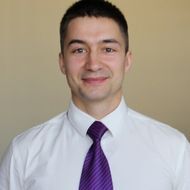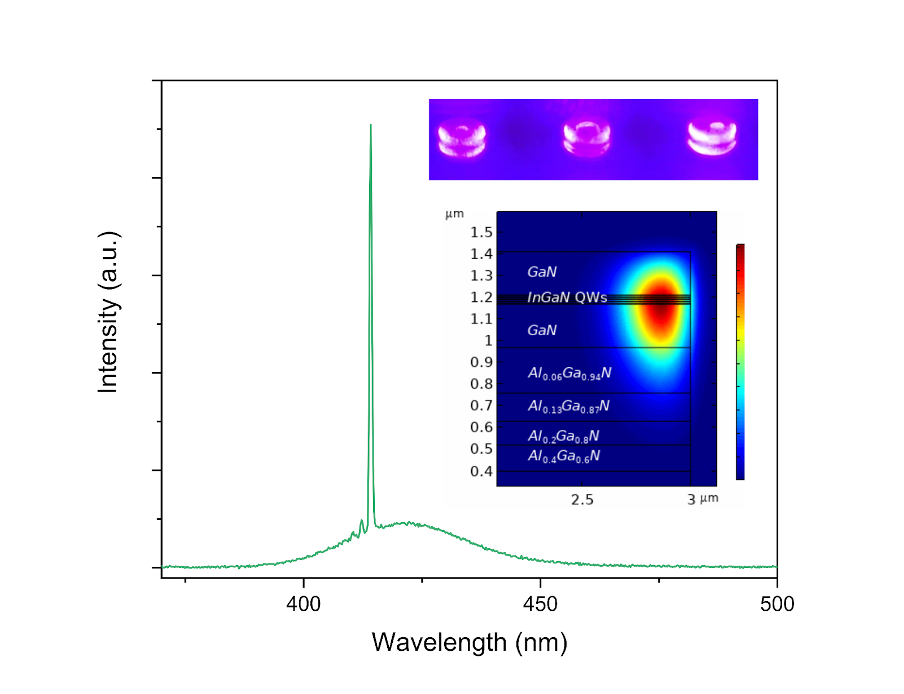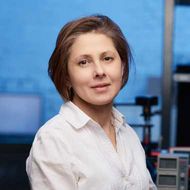Scientists Develop Effective Microlasers as Small as a Speck of Dust

Researchers at HSE University–St Petersburg have discovered a way to create effective microlasers with diameters as small as 5 to 8 micrometres. They operate at room temperature, require no cooling, and can be integrated into microchips. The scientists relied on the whispering gallery effect to trap light and used buffer layers to reduce energy leakage and stress. This approach holds promise for integrating lasers into microchips, sensors, and quantum technologies. The study has been published in Technical Physics Letters.
The devices around us are becoming increasingly compact without sacrificing functionality. Smartphones now handle tasks that once required a computer, and small cameras can capture images with quality approaching that of professional equipment. Miniaturisation has also extended to lasers—sources of directed light that are embedded in optical chips, sensors, medical devices, and communication systems.
However, shrinking a laser while preserving its optical properties, efficiency, and reliability remains a significant challenge. Developing a laser measuring 5–8 micrometres—approximately the diameter of a red blood cell—requires complex calculations, and its fabrication demands high precision. The main challenge lies in the design of the laser itself. Unlike conventional light sources, lasers amplify radiation within a resonator—a structure where light is repeatedly reflected and amplified. The more compact the laser, the harder it is to trap the light inside so that it undergoes continuous reflection and amplification without losing energy, which is essential for stable operation.
Another challenge is the presence of defects in the material. Lasers rely on crystals that can amplify light, but microscopic defects often form during their growth, reducing the efficiency of light generation. To minimise these irregularities, scientists carefully select synthesis conditions and simulate the properties of crystals under various scenarios in advance. However, solving one problem often gives rise to others, turning laser development into a continual search for balance.
HSE scientists have developed microlasers with diameters as small as 5 to 8 micrometres that operate at room temperature. The researchers used a crystal structure composed of indium, gallium, nitrogen, and aluminium compounds grown on a silicon substrate. To trap light in a tiny space, the scientists relied on the whispering gallery effect.

Eduard Moiseev
'This phenomenon is well-known in acoustics: in some churches and cathedrals, you can whisper words against one wall, and the sound will be clearly heard on the opposite wall—even though, under normal conditions, the sound would not travel that far. A similar effect enables light to be repeatedly reflected inside the disk-shaped microlaser, minimising energy loss,' explains Eduard Moiseev, Senior Research Fellow at the International Laboratory of Quantum Optoelectronics, HSE University–St Petersburg.
However, even under these conditions, light waves can partially escape into the substrate and be lost. To prevent this, the researchers added a stepped buffer layer, which compensates for mechanical stresses between the silicon and nitride layers and reduces radiation leakage, enabling the laser to operate stably even at such small sizes.


Natalia Kryzhanovskaya
'Our microlasers operate stably at room temperature without the need for cooling systems, making them convenient for real-world applications. In the future, such devices will enable the creation of more compact and energy-efficient optoelectronic technologies,' explains Natalia Kryzhanovskaya, Head of the International Laboratory of Quantum Optoelectronics at HSE University–St Petersburg.
The paper has been prepared as part of a project implemented within the framework of the International Academic Cooperation competition at HSE University.
See also:
Using Two Cryptocurrencies Enhances Volatility Forecasting
Researchers from the HSE Faculty of Economic Sciences have found that Bitcoin price volatility can be effectively predicted using Ethereum, the second-most popular cryptocurrency. Incorporating Ethereum into a predictive model reduces the forecast error to 23%, outperforming neural networks and other complex algorithms. The article has been published in Applied Econometrics.
Administrative Staff Are Crucial to University Efficiency—But Only in Teaching-Oriented Institutions
An international team of researchers, including scholars from HSE University, has analysed how the number of non-academic staff affects a university’s performance. The study found that the outcome depends on the institution’s profile: in research universities, the share of administrative and support staff has no effect on efficiency, whereas in teaching-oriented universities, there is a positive correlation. The findings have been published in Applied Economics.
Physicists at HSE University Reveal How Vortices Behave in Two-Dimensional Turbulence
Researchers from the Landau Institute for Theoretical Physics of the Russian Academy of Sciences and the HSE University's Faculty of Physics have discovered how external forces affect the behaviour of turbulent flows. The scientists showed that even a small external torque can stabilise the system and extend the lifetime of large vortices. These findings may improve the accuracy of models of atmospheric and oceanic circulation. The paper has been published in Physics of Fluids.
Solvent Instead of Toxic Reagents: Chemists Develop Environmentally Friendly Method for Synthesising Aniline Derivatives
An international team of researchers, including chemists from HSE University and the A.N. Nesmeyanov Institute of Organoelement Compounds of the Russian Academy of Sciences (INEOS RAS), has developed a new method for synthesising aniline derivatives—compounds widely used in the production of medicines, dyes, and electronic materials. Instead of relying on toxic and expensive reagents, they proposed using tetrahydrofuran, which can be derived from renewable raw materials. The reaction was carried out in the presence of readily available cobalt salts and syngas. This approach reduces hazardous waste and simplifies the production process, making it more environmentally friendly. The study has been published in ChemSusChem.
How Colour Affects Pricing: Why Art Collectors Pay More for Blue
Economists from HSE University, St Petersburg State University, and the University of Florida have found which colours in abstract paintings increase their market value. An analysis of thousands of canvases sold at auctions revealed that buyers place a higher value on blue and favour bright, saturated palettes, while showing less appreciation for traditional colour schemes. The article has been published in Information Systems Frontiers.
New Method for Describing Graphene Simplifies Analysis of Nanomaterials
An international team, including scientists from HSE University, has proposed a new mathematical method to analyse the structure of graphene. The scientists demonstrated that the characteristics of a graphene lattice can be represented using a three-step random walk model of a particle. This approach allows the lattice to be described more quickly and without cumbersome calculations. The study has been published in Journal of Physics A: Mathematical and Theoretical.
Scientists Have Modelled Supercapacitor Operation at Molecular and Ionic Level
HSE scientists used supercomputer simulations to study the behaviour of ions and water molecules inside the nanopores of a supercapacitor. The results showed that even a very small amount of water alters the charge distribution inside the nanopores and influences the device’s energy storage capacity. This approach makes it possible to predict how supercapacitors behave under different electrolyte compositions and humidity conditions. The paper has been published in Electrochimica Acta. The study was supported by a grant from the Russian Science Foundation (RSF).
Designing an Accurate Reading Skills Test: Why Parallel Texts are Important in Dyslexia Diagnosis
Researchers from the HSE Centre for Language and Brain have developed a tool for accurately assessing reading skills in adults with reading impairments. It can be used, for instance, before and after sessions with a language therapist. The tool includes two texts that differ in content but are equal in complexity: participants were observed to read them at the same speed, make a similar number of errors, and understand the content to the same degree. Such parallel texts will enable more accurate diagnosis of dyslexia and better monitoring of the effectiveness of interventions aimed at addressing it. The paper has been published in Educational Studies.
HSE University Launches Development of Domestic 6G Communication Technologies Based on Sub-Terahertz Microelectronics
HSE University has launched a large-scale research and engineering initiative to develop domestic technologies for next-generation 6G communication systems. The project is being carried out by the team of the Strategic Technological Project 'Trusted 6G Communication Systems Technology Suite' implemented under the Priority 2030 programme.
Internal Clock: How Heart Rate and Emotions Shape Our Perception of Time
Our perception of time depends on heart rate—this is the conclusion reached by neuroscientists at HSE University. In their experiment, volunteers watched short videos designed to evoke specific emotions and estimated each video's duration, while researchers recorded their heart activity using ECG. The study found that the slower a participant's heart rate, the shorter they perceived the video to be—especially when watching unpleasant content. The study has been published in Frontiers in Psychology.


